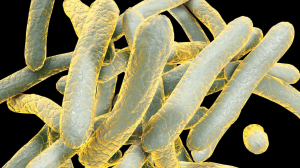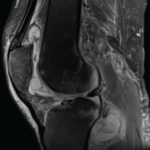
A 3D illustration of the bacterium, Mycobacterium tuberculosis.
Kateryna Kon/shutterstock.com
Pathologists are legendary for blending their work product with the culinary arts. Through the years, their use of delectable foods as descriptors has created a clever way to indelibly link in the minds of clinicians the histopathologic observations of disease with an assortment of these tasty foods: There is the depiction of an apple green birefringence when gazing at amyloid seeped tissue under the microscope, and at autopsy, the nutmeg appearance of an engorged liver suggests longstanding vascular congestion of that organ. When the splenic arteries resemble a thick onion skin, think of lupus or the mysterious Castleman’s disease as its underlying cause. Pathologists are enamored with berries, cherries, jellies, apple cores, spices, chocolates and eggshells; the list is endless.1
In this pantheon of pathology foodstuffs resides the noun caseation, a variation of the Latin word, caseus, or cheese. Clinicians’ ears perk up when hearing the term, caseating granuloma, a description that immediately conjures up a dreaded diagnosis, tuberculosis (TB). Caseation necrosis, that cheesy ooze of necrotic cellular debris, is an impressive reminder of the virulence of Mycobacterium tuberculosis (MTB). The human body becomes so overwhelmed, so consumed by this deadly infection, that the term consumption was used to describe it before the eminent microbiologist Robert Koch first identified the infectious origin of TB in 1882.
TB has tormented humanity through the millennia, sometimes destroying its victims through its sheer microbiological force and other times, battling the host to a draw, and then waiting patiently for when its adversary, the immune system, becomes weakened through the use of immune suppressive drugs or by some other serious illness. Unlike other vicious microbial tormentors—such as the spirochete of syphilis or MTB’s mycobacterial cousin, causing leprosy—that have a predilection for selected tissues, MTB is the least bit fussy. Of course, it prefers to occupy the vast open airspace of the lungs, where it can thrive and multiply as it prepares to be coughed up or spat out, ready to torment a new victim. But MTB is accommodating and can readily occupy and liquefy virtually any other organ space. Say cheese.
Rheumatology & TB
Rheumatologists have had a tangled relationship with TB. Although not considered one of our primary diseases, our continued use of immunosuppressive therapies, especially biological drugs, heightens the risk of our patients contracting the disease. We always include TB in our differential diagnosis of the febrile patient. In the latter half of the 19th century, when TB was responsible for nearly one-quarter of all deaths in Massachusetts and New York, it was often implicated as the cause for just about every chronic illness.2


